Physical Activity and Health in Australia: A Comprehensive Study
VerifiedAdded on 2023/03/17
|14
|1202
|62
Presentation
AI Summary
This presentation examines the critical need for increased physical activity and reduced sedentary behaviors among Australians, addressing the current health patterns and activity levels. It establishes a clear relationship between sedentary lifestyles and adverse health outcomes, including obesity, cardiovascular disorders, and other chronic diseases, supported by statistical data from the Australian Bureau of Statistics. The presentation emphasizes the importance of physical activity in reducing disease burden, improving muscle strength, and bone density. It also highlights health behavior strategies, such as motivational interviewing and the trans-theoretical approach, to encourage lifestyle changes. Furthermore, it provides recommended physical activity levels, including both moderate and vigorous aerobic activities, and discusses the benefits of strength training. The presentation concludes by reinforcing the need for active lifestyles to prevent weight gain and chronic disorders, thereby improving the quality of life. References are provided in APA format.
1 out of 14

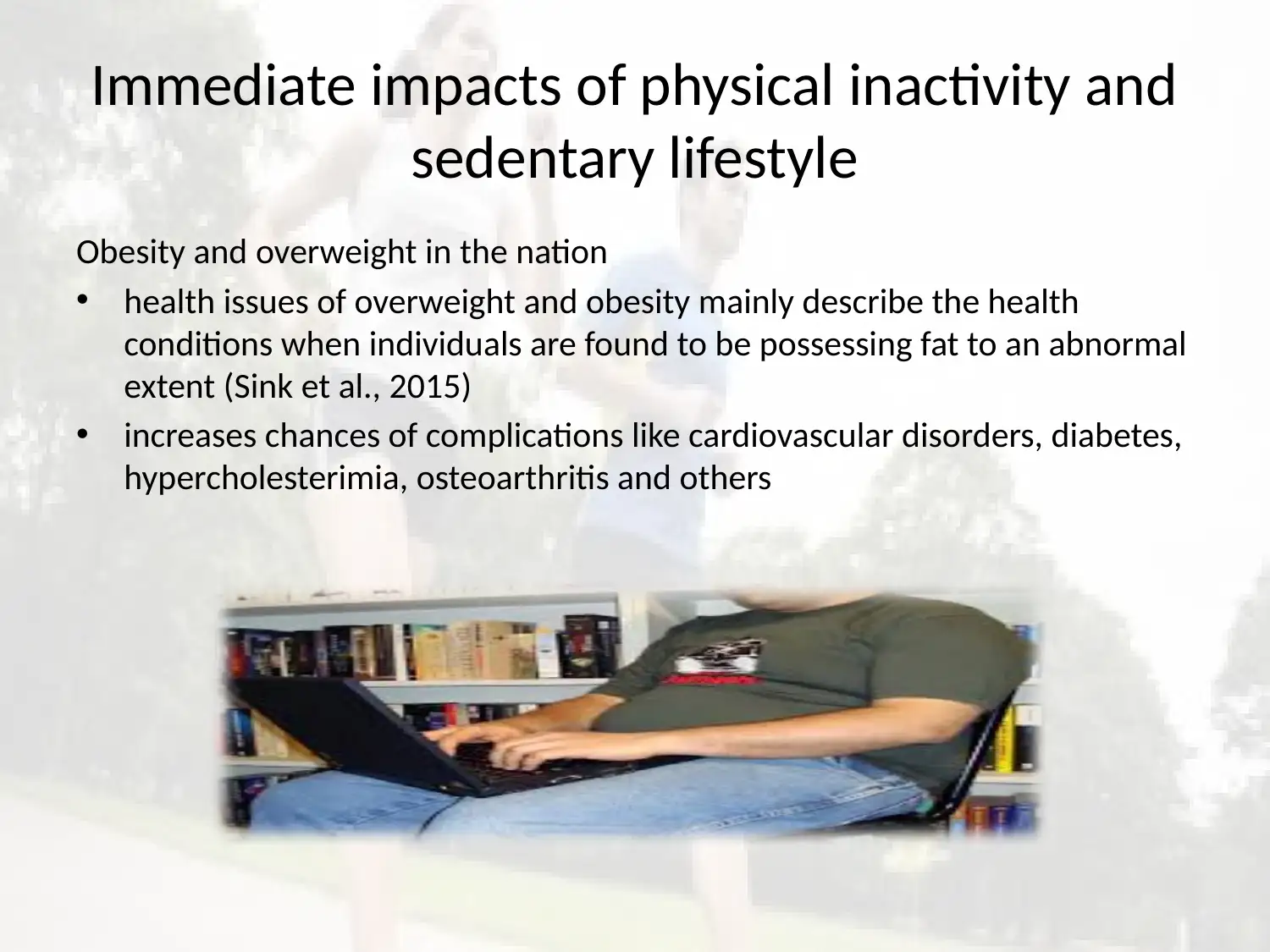
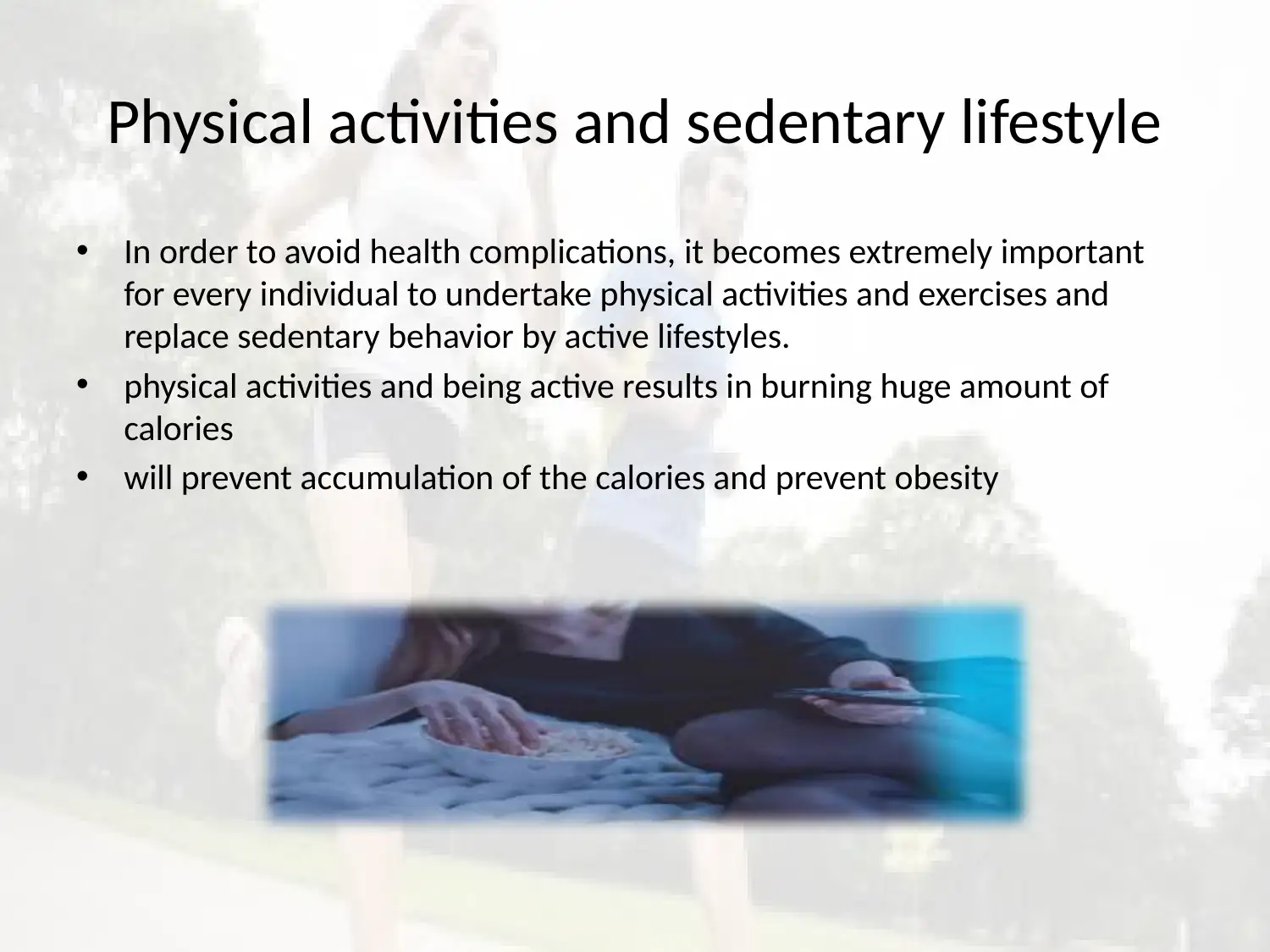

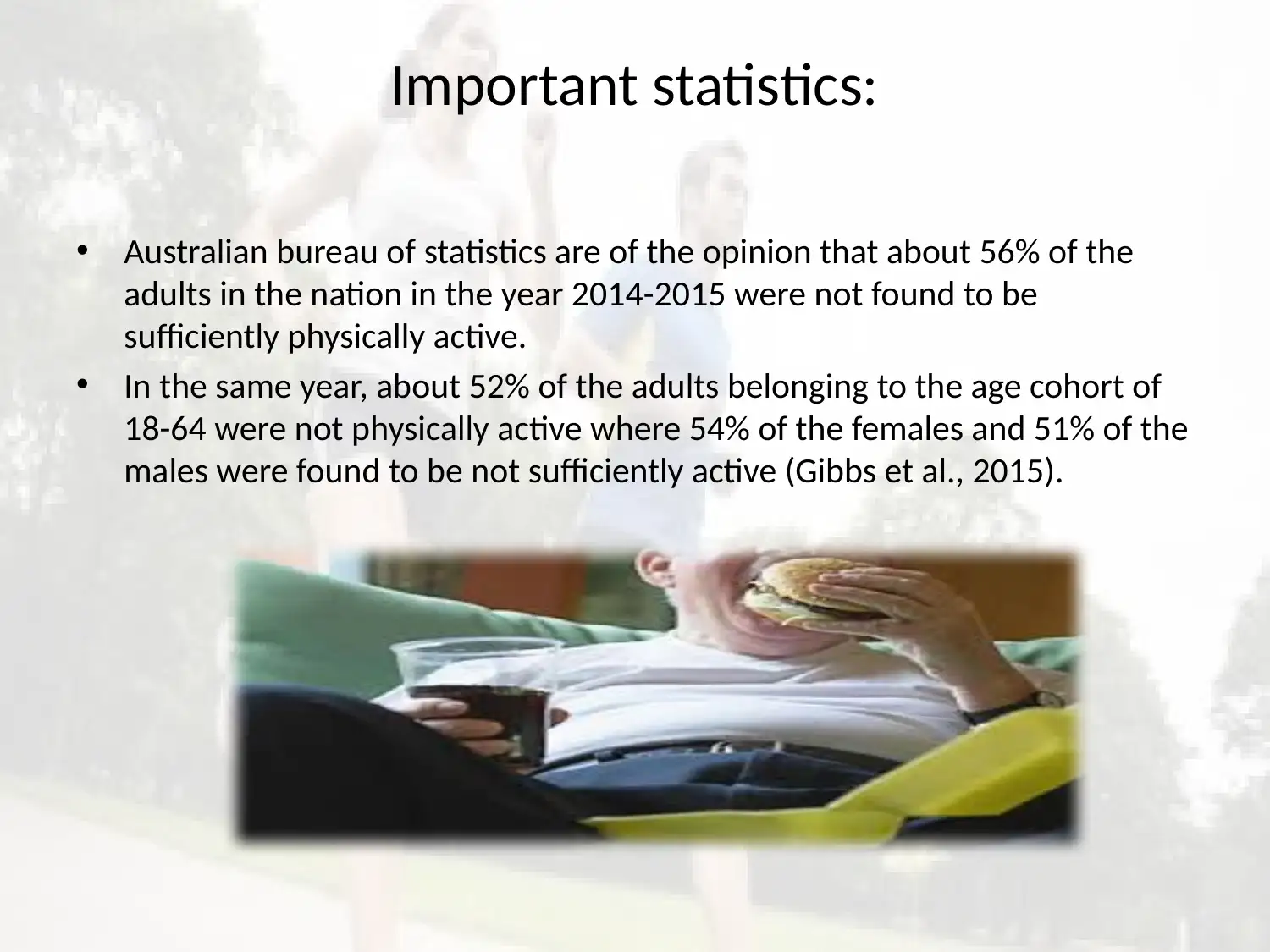
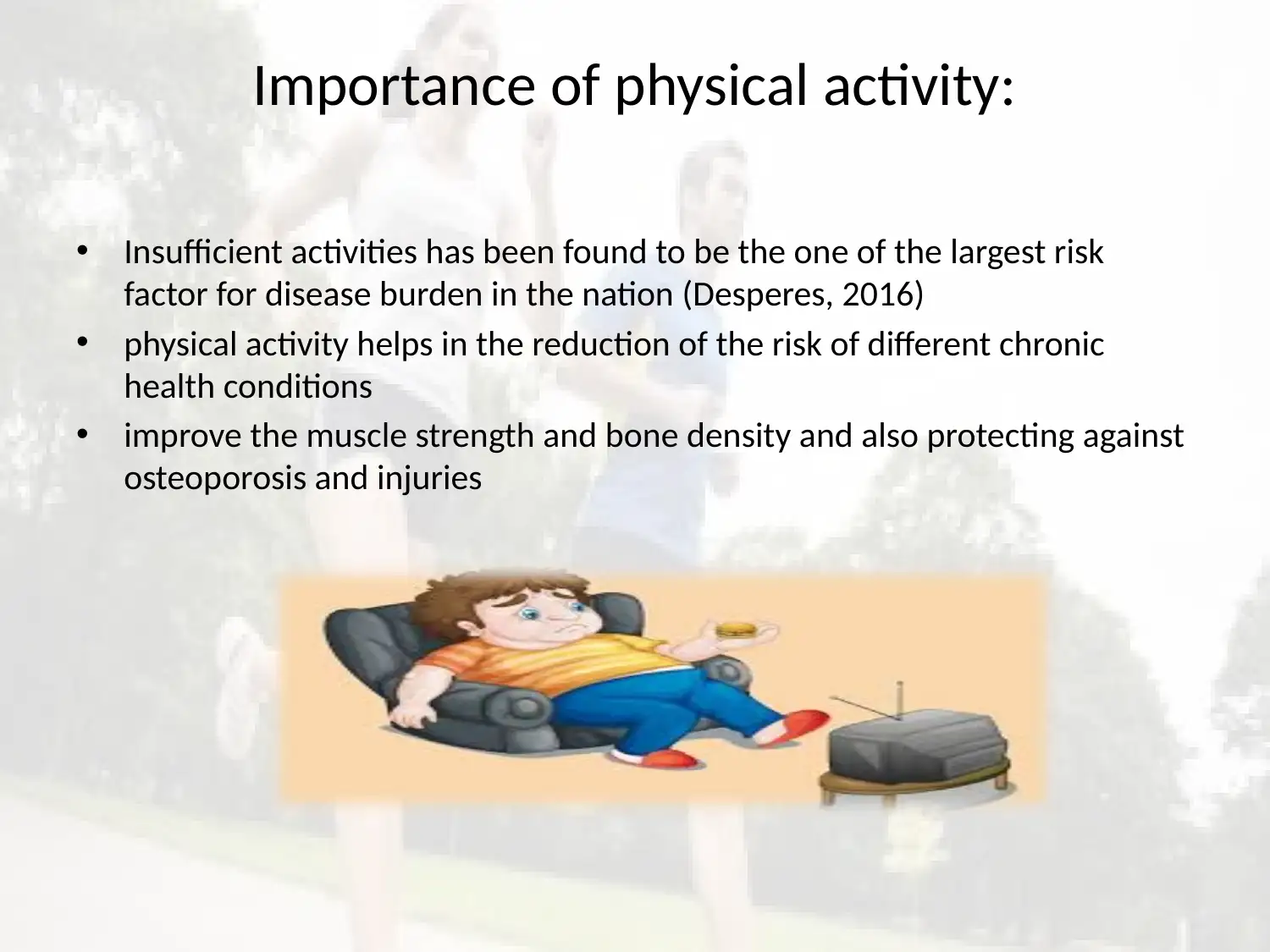
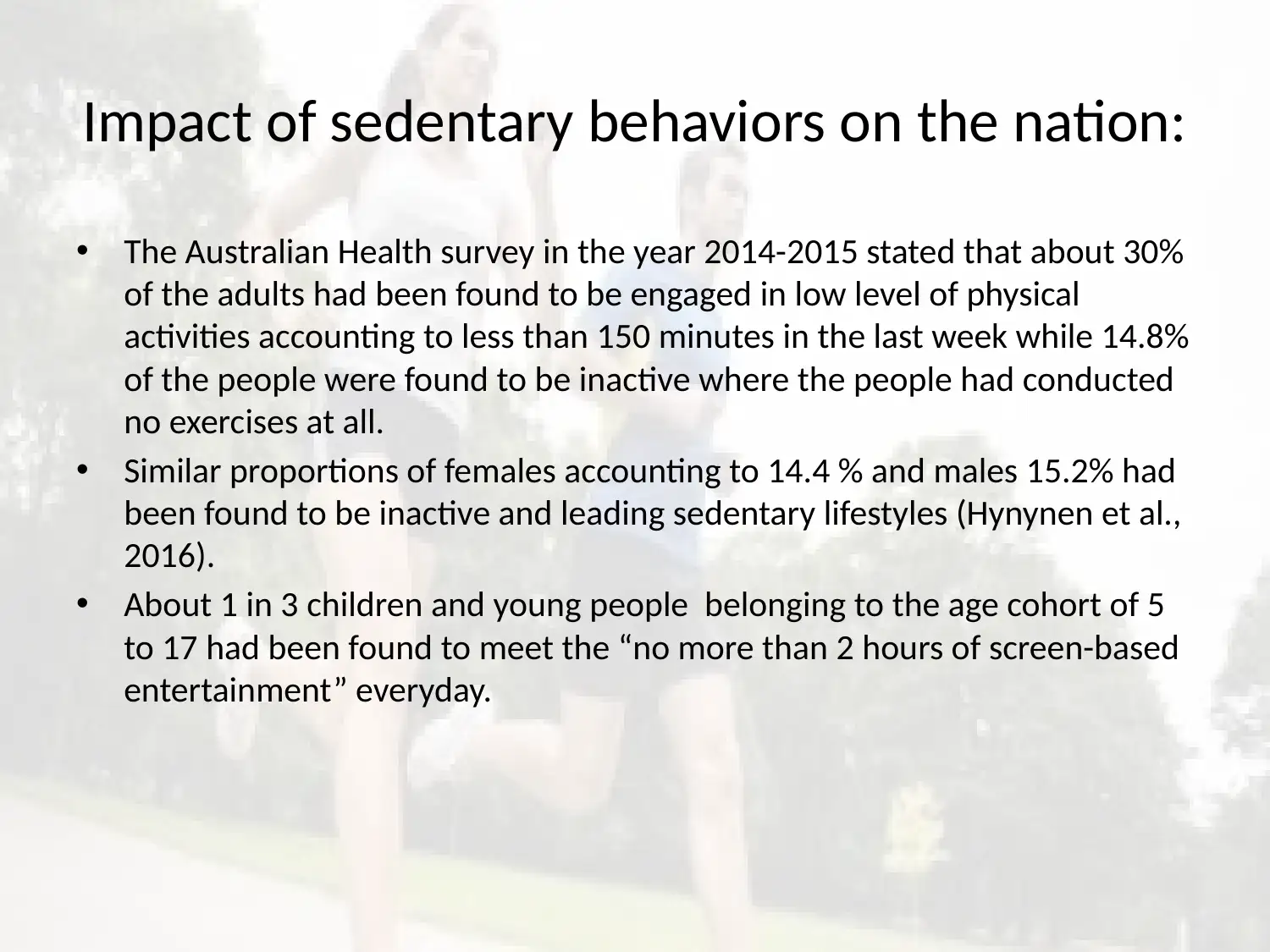

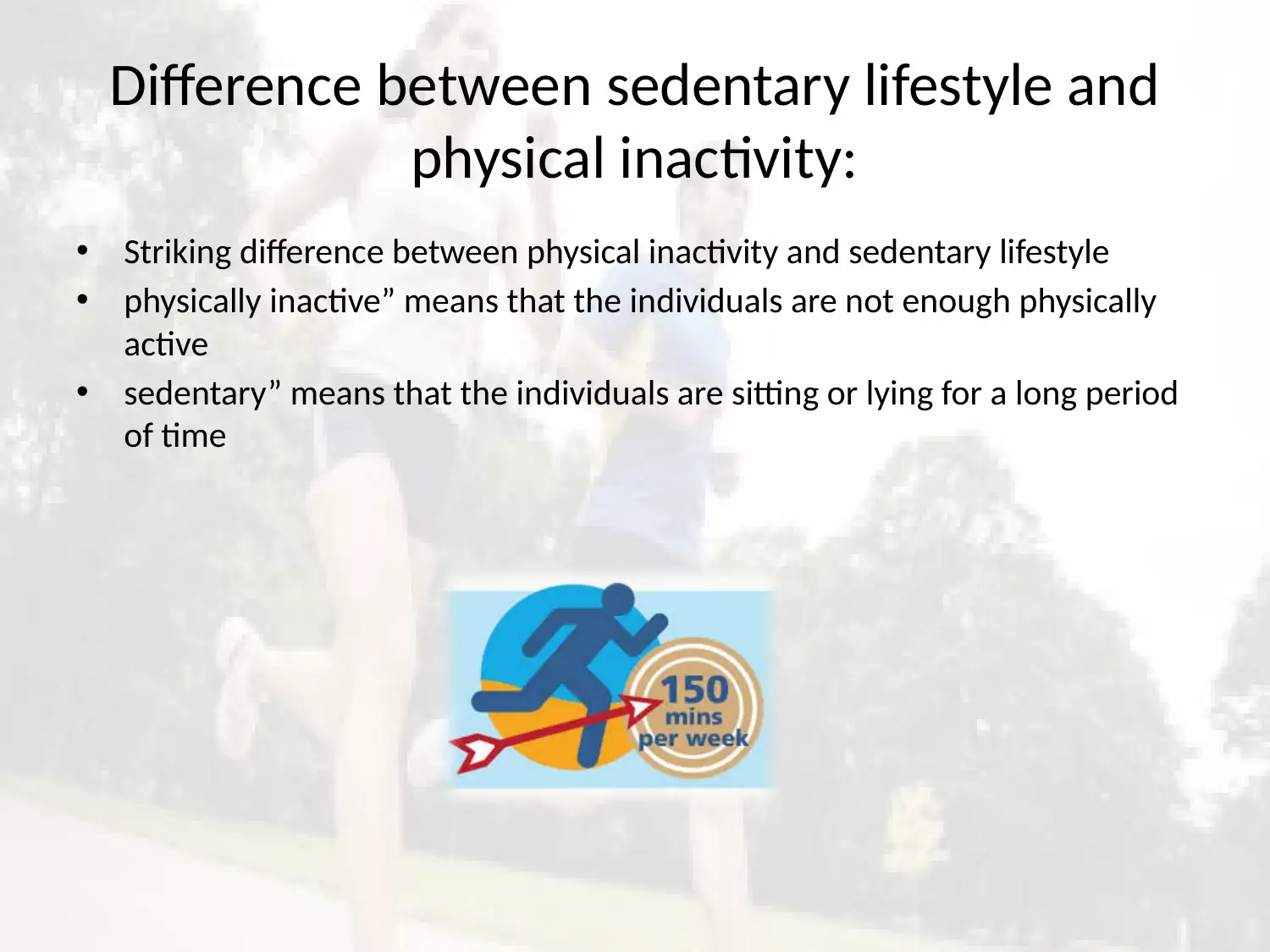
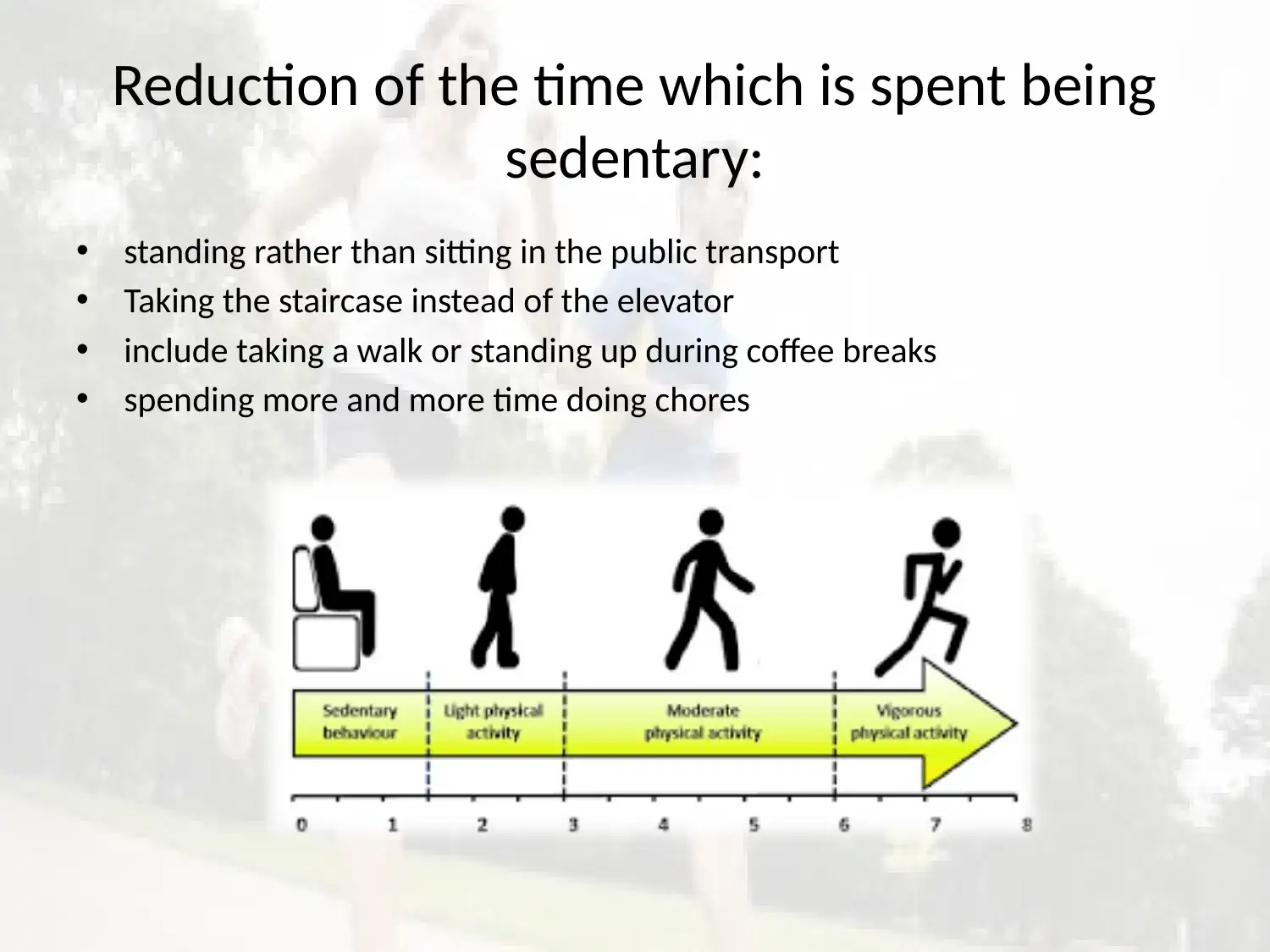
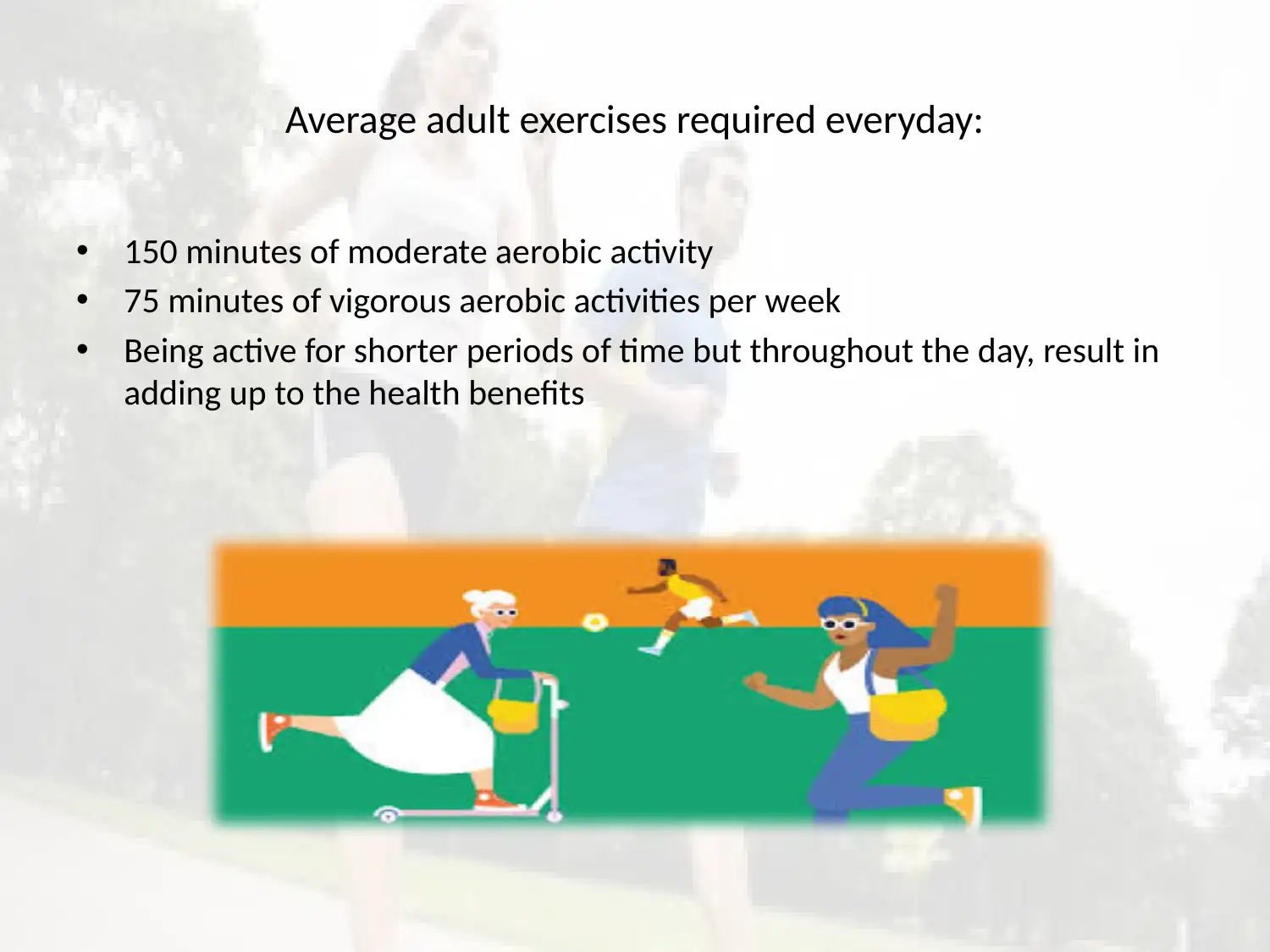
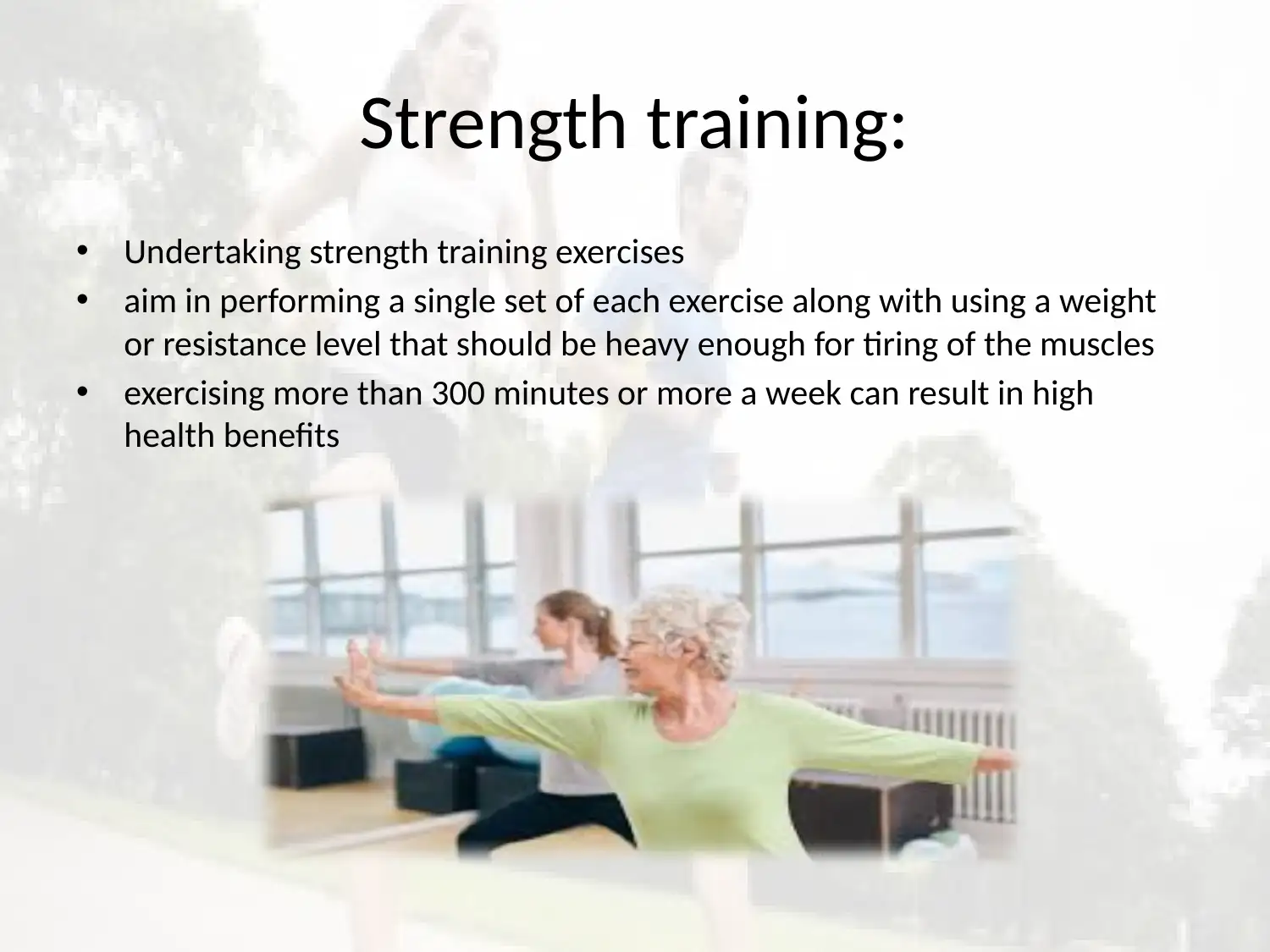
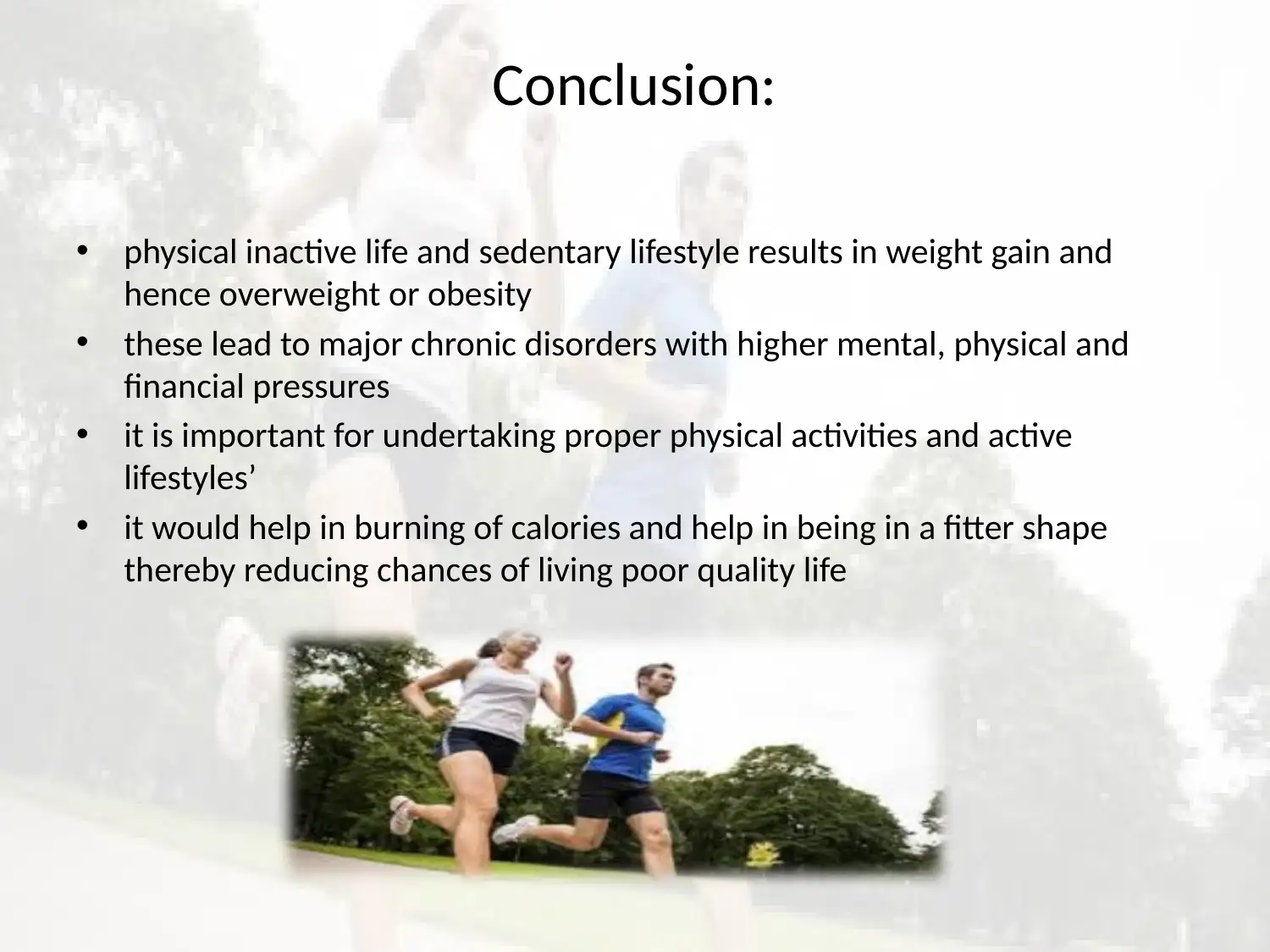






![[object Object]](/_next/static/media/star-bottom.7253800d.svg)